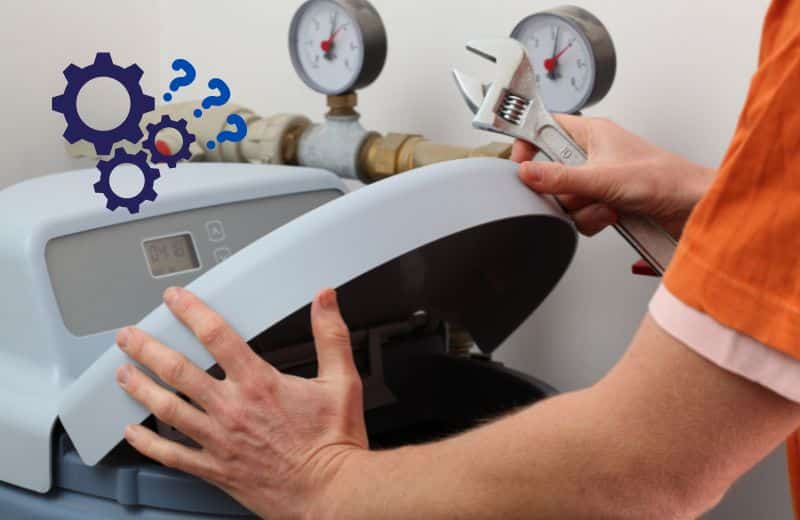
Using a water softener for the first time? Or just looking to program a specific setting in your water softener, and need a refresher?
Here, we’ve covered the step-by-step process of programming a water softener from start to finish. Read on if you need to know the entire process, or browse the contents below if you need to program just one setting.
Table of Contents
When you buy a water softener, it’ll be delivered to your home either with no pre-set programming, or with generic programming that doesn’t suit your water softening needs.
It’s likely that your water softener’s pre-set programming won’t reflect your own programming requirements. For instance, the hardness setting could be too low, causing water softener to regenerate too infrequently to protect your home from hard water 24/7.
Programming a water softener gives you control over how effectively your softener performs, and other important factors, like the regeneration cycle frequency, time, and length.
Most water softener owners’ manuals come with instructions on how to program the system, but you can use the information below as a general guide.

First, install your water softener and make sure the brine tank is clean and ready for use. The resin tank should be pre-loaded with resin.
Next, plug the water softener into a nearby power outlet (preferably on a GFCI outlet) and switch it on. Open the bypass valve to allow water to pass through the softener.
If you notice any leaks, shut off the water and tighten your fittings, then switch the water back on. You’re now ready to program the water softener settings.
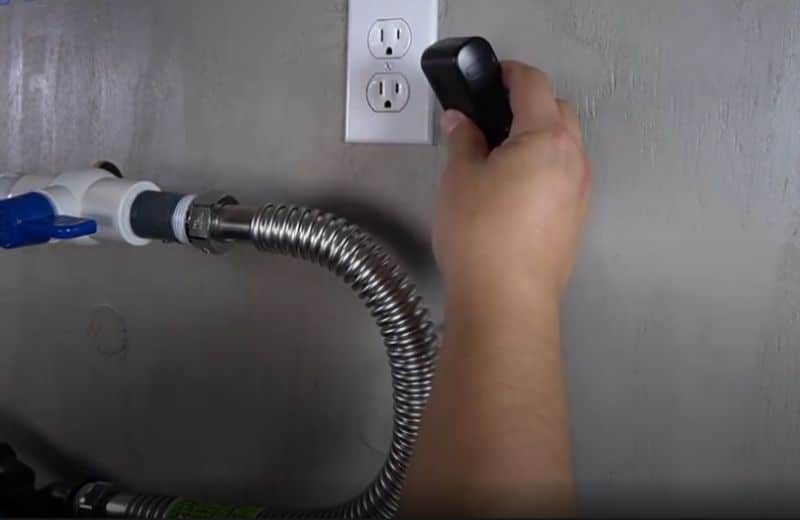
All water softeners need to regenerate. As the water softener regeneration cycle length can take several hours, it’s convenient for this to take place overnight.
You need to set your water softener’s clock to the right time to make sure this can happen. For instance, if your clock dial reads 9AM but it’s actually 2PM, your water softener will end up regenerating 5 hours earlier than anticipated.
Most water softening systems have a knob that you can turn to adjust the current time. Some modern systems have a digital clock that you can set by pressing buttons or following touch-screen commands.
Next, input your water hardness into the water softener. If you don’t already know your water hardness, test your water with a water hardness test kit now.
The more accurate your hardness input, the more effectively the water softener can soften your water. The hardness of your water determines how much sodium is needed during the softening process. If the salt dose is too low, you won’t get properly soft water.
The majority of softeners allow you to input a water hardness between 0 and 99 grains per gallon (GPG).
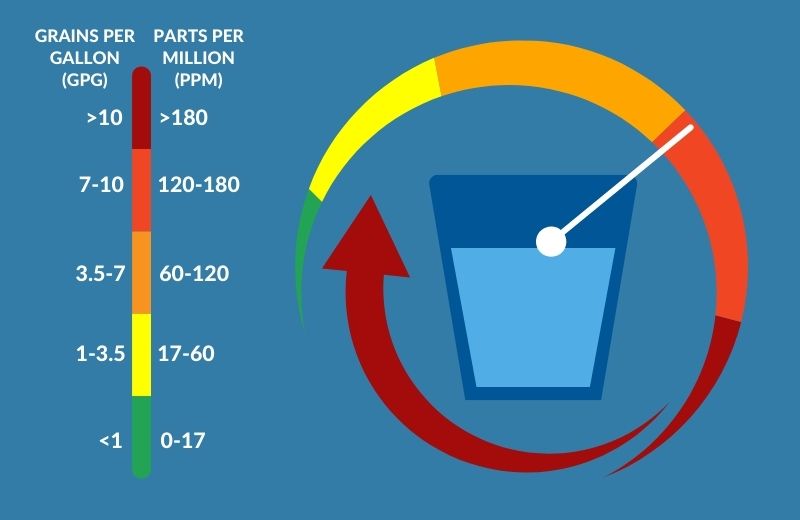
Now set the salt dose setting. This will program how much salty water enters the resin tank during the brine draw and brine fill stages of water softener regeneration. The harder your water, the bigger the salt dose required from the brine line.
If you’re unsure, follow the manufacturer’s instructions and use the recommended settings in the user manual based on the hardness of your water supply and your water usage.
Some softening systems are smart enough to calculate whether less or more salt is needed from the brine tank per regeneration cycle. In this case, you won’t need to input these settings yourself.
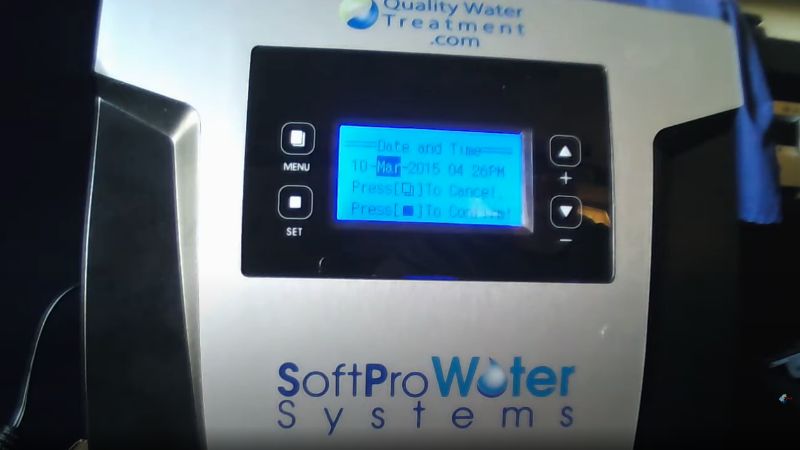
A water softener with Bluetooth control allows you to program the settings remotely. Most likely, the softener will have a digital control head, but Bluetooth programming allows you to input the settings for this control head on your phone.
To program water softener systems with Bluetooth control, switch on your phone’s Bluetooth and download the manufacturer’s Bluetooth app (information about this should be found in your user manual). Then, use the app to program the softener’s settings as you would on the control head.
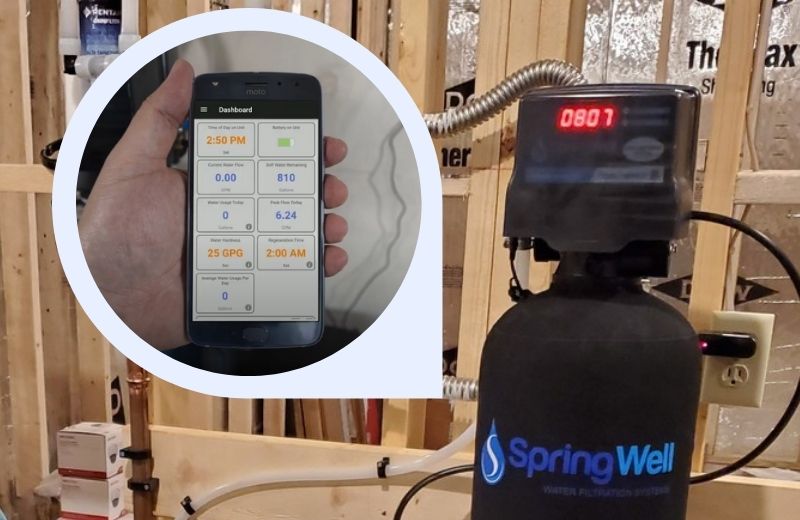
Most water softeners are now sold metered, which means they regenerate based on water use, rather than time. However, there are still plenty of clock control water softeners in people’s homes.
If your water softener has clock control, you can program the softener’s regeneration cycle time by moving the gear or dial on the top of your resin tank to your current time and your preferred regeneration time.
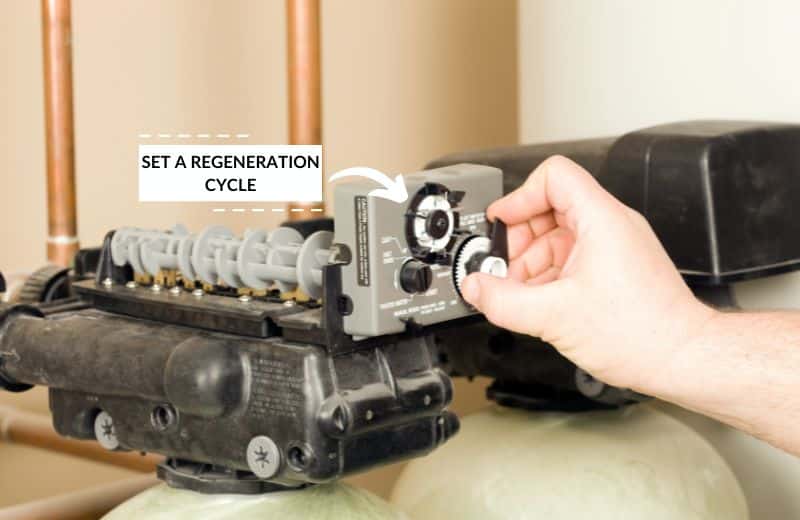
Your softener hardness should be set at whatever hardness your water is. It’s essential to have the proper settings for hard water treatment. If your hardness is set too low or too high, you might not get the proper soft water output for your household needs.
Most people let their unit regenerate every three days to once a week. This typically depends on your hard water setting, the system capacity, and your water usage.
If your hard water setting is too high, the softening system will regenerate too frequently, increasing operating costs and wasting salt and water.
Yes, water softening systems are constantly in operation, delivering soft water to your water heater, faucets, showerheads, and other plumbing fixtures. However, softeners only regenerate every 3-7 days on average, so if you can hear constantly running water, you may have an internal problem that you need to troubleshoot.
Water Treatment Specialist For 20+ years, Jennifer has championed clean water. From navigating operations to leading sales, she's tackled diverse industry challenges. Now, at Redbird Water, she crafts personalized solutions for homes, businesses, and factories. A past Chamber President and industry advocate, Jennifer leverages her expertise in cutting-edge filtration and custom design to transform water concerns into crystal-clear solutions.